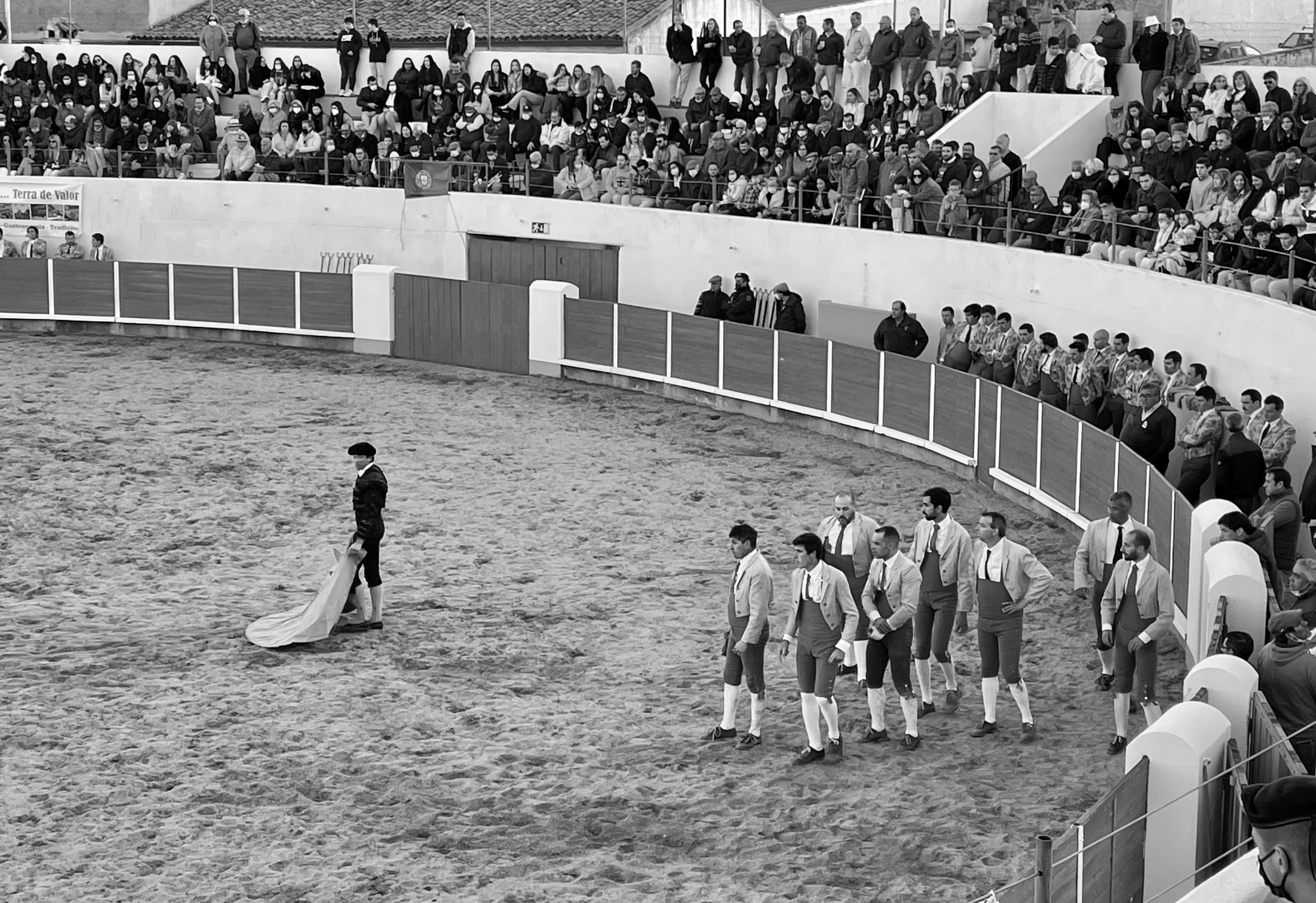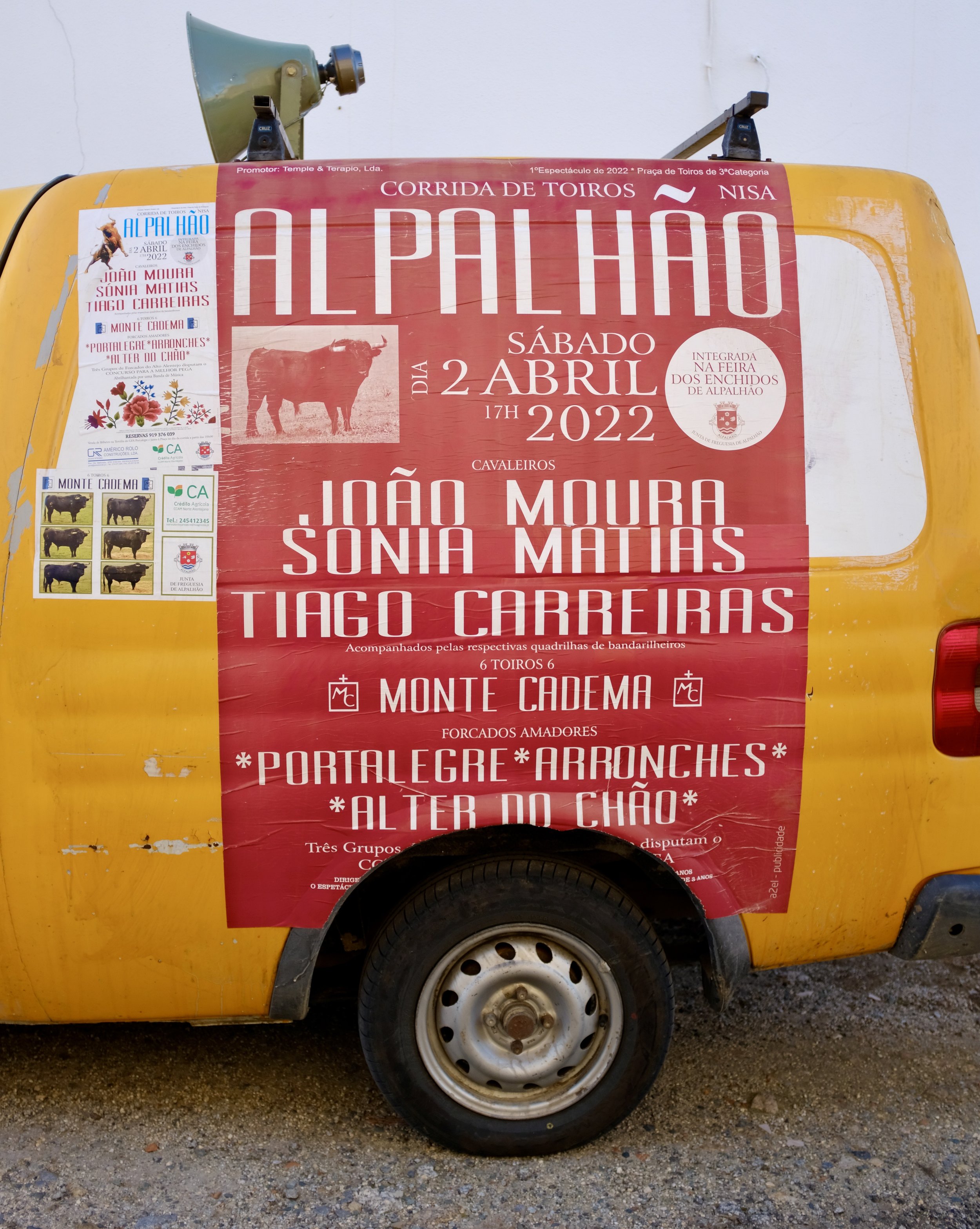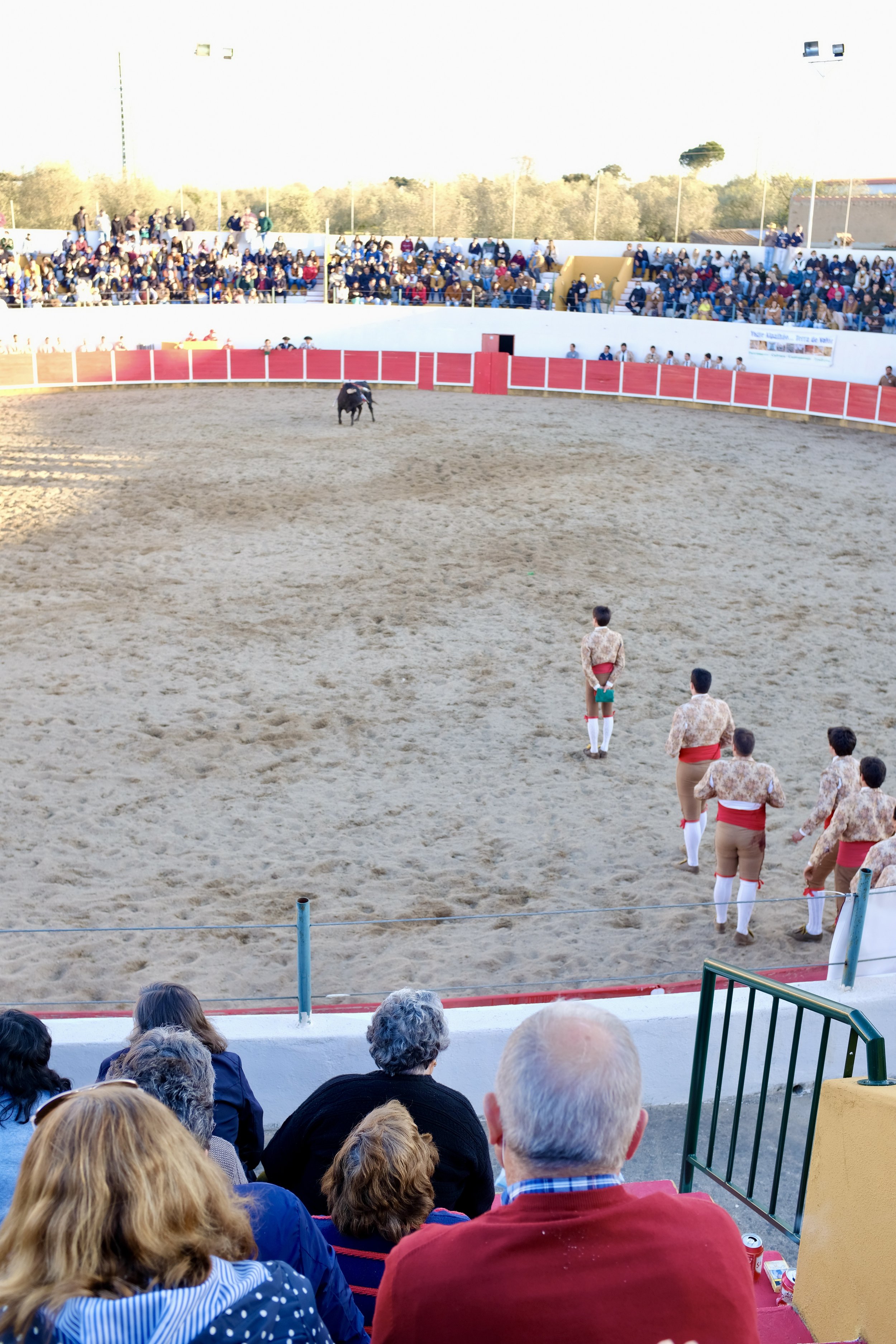A Day Full Of Bull
I heartily subscribe to the ‘When in Rome. . .’ approach to travel. When you do as the locals do it inevitably leads to a more interesting, more engaging, more fun experience.
In Rome, it’s easy. You dress smartly, wear sunglasses on your forehead, walk into a small cafe, lean against the counter, and order an espresso. Presto, you’re a Roman.
But what do you do in Alpalhão, a tranquil town in central Portugal? I found myself there for a few days last spring. Roaming around the quiet streets one morning, I noticed a poster for a bullfight the following day. I’ve never seen such a thing and while I don’t relish the idea of an animal in distress, I must admit my inner-Hemingway was intrigued. What would it be like? How does it all work?
Unable to convince anyone in my family that it was a must-do cultural experience, I trundled off to the bullfighting arena on my own. Only I wasn’t. Seemingly all of Alpalhão and environs was with me. My Portuguese language skills are limited to ordering custard tarts, so I couldn’t ask anyone exactly what was going on. Instead, I stuck around long enough to absorb a general understanding of what I was seeing.
A Portuguese bullfight goes something like this.
The stands fill with people. Men, women, a few children, and more men. A brass band plays, the crowd cheers. It feels festive. A man or woman on a horse, the cavaliero (cavaleira) gallops around the ring and whips up the energy. A bull is released into the ring. They are big. Agitated. And shockingly quick. They chase the horse and get very, very close but never quite make contact. The cavaleiro has nasty decorative sticks, barbed at one end, which they try to poke into the back of the bull’s neck. It looks like it requires hefty measures of skill and daring. And it does not look like fun for the bull. Not at all.
As the bull tires, the matador enters the ring, often supported by one or two bandarilheiros (helpers). The matador looks like they’re supposed to. The outfit, the cape, the machismo—it’s all there. And they do exactly what you expect them to do. They draw the bull into a sudden charge and, at the last minute, flick the colourful cape out of the way. The bull grows more tired, more uncomfortable. And more pissed off.
This is when the real drama happens.
Eight men, the forcados, gingerly jump into the ring. They’re dressed similarly to the matador, but less decoratively. Kind of a matador meets waiter meets school boy look. One of the forcados wears a green hat. He’s the one whose balls are bigger than the bulls (so to speak). He seems to have no fear. Or at least, no good judgement. This guy in the green hat faces the bull on the far side of the ring. The rest of the forcados form a single file line a few steps behind him. Slowly, in exceptionally careful movements, the green hat guy inches closer to the bull. It’s like a game of chicken (with an angry 2000 lb. chicken).
The bull and the green hat guy have their eyes locked on one another.
At some point, the bull, exhausted and hurting, decides he’s had enough of the bullshit (so to speak). He does some quick math and figures he’s close enough to the green hat guy to charge and send him skyward with his horns. Meanwhile, the guy in the green hat does his own quick math. He figures he’s close enough to jump on the bull’s head, grab his horns, and hold on long enough for the rest of the forcados to jump on the bull and subdue the great beast.
At this moment of truth, the arena is deadly quiet. The band has long since stopped playing.
Danger hangs in the air.
In most of the contests I saw that day, the forcados got the upper hand. With eight-to-one odds against the bull this is unsurprising. But every now and then, the bull meted out his own justice and rag-dolled the green hat guy. It’s hard to imagine how scary and painful this must be for the green hat guy. Then again, having someone jab spikes in the back of your neck can’t be very nice either.
In Portugese bullfighting the bull is not killed. Does that make it all okay? Everyone will have a different answer to that question. What I can say for certain is that my experience at the bullfighting arena definitely made me feel like a local for the day.





